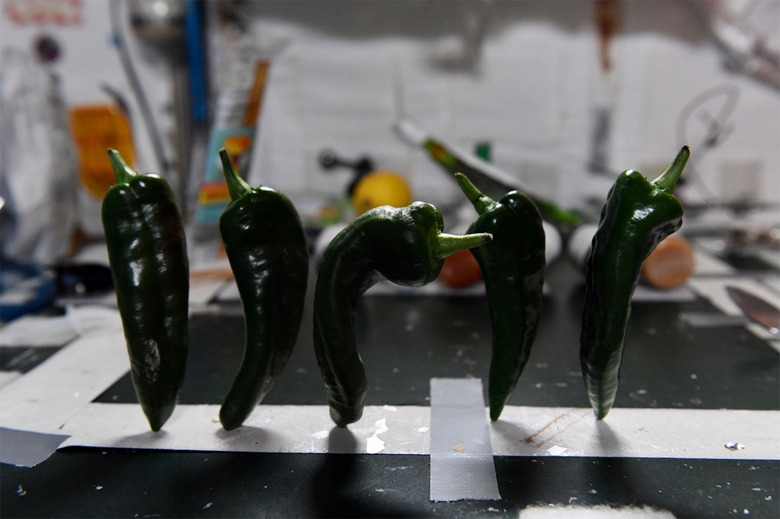ISS Astronauts Harvest Chile Peppers And Enjoy Space Tacos
One of the biggest challenges facing human spaceflight for long durations is providing enough necessities, such as food and water for the crew. One of the projects that NASA is working on aboard the ISS is growing food to support the astronauts and give crew members a more diverse diet while in space. Recently, astronaut Megan McArthur shared some images on Twitter celebrating that the team had harvested red and green chili peppers.
According to McArthur, after harvesting the peppers, crewmembers tasted them, filled out surveys for data from the experiment, and then got to eat some fantastic space tacos. The space tacos included fajita beef, rehydrated tomatoes and artichokes, and the hatch chili peppers grown aboard ISS. The ISS Research Twitter account also shared some information about the pepper harvest.
The harvest happened on October 29 and was the first crop of chili peppers grown as part of the Plant Habitat-04 study. The experiment was the first to cultivate chili peppers aboard the ISS. Peppers had to grow for about four months before the astronauts could harvest them. While they did get to eat some of the peppers, some had to be returned to earth for analysis.

NASA says the experiment was one of the most difficult so far because of the long germination and growing times for the chili peppers. Data gathered during the experiment helped expand NASA's knowledge base for growing food crops on long-duration space missions. During the more than the two-decade lifespan of the ISS, astronauts have been aboard the station continuously. They mostly survived on packaged foods with some fresh food delivered on regular supply missions.
Learning to grow their own food for long-duration missions is critical and is part of the preparation for Artemis missions to the moon and eventually Mars. Those longer duration missions could last for months or years and will be too far from Earth for regular resupply missions. One of the challenges with providing food for crewmembers is that packaged foods stored for long periods suffer from degradation of quality which reduces key nutrients within the food that are critical for the health of the crewmembers.
Friday Feasting! After the harvest, we got to taste red and green chile. Then we filled out surveys (got to have the data! 😁). Finally, I made my best space tacos yet: fajita beef, rehydrated tomatoes & artichokes, and HATCH CHILE! https://t.co/pzvS5A6z5u pic.twitter.com/fJ8yLZuhZS
— Megan McArthur (@Astro_Megan) October 29, 2021
Long-term storage reduces the amount of vitamin C and vitamin K in foods. NASA and partners have been growing fresh crops aboard the ISS since 2015. So far, the astronauts have grown and eaten ten different crops as part of the research into the supplementation of crewmember diets with fresh food. In the past, astronauts have harvested several crops of radishes, leafy greens, and extra dwarf pak choi, among other crops.
While it is experimenting with growing fresh food for long-duration space missions, NASA is clear that astronauts will still rely on packaged food sent from Earth. Peppers were chosen as a food crop because they contain key nutrients and are a source of Vitamin C. Pepper plants are also very robust and had a good chance of growing in microgravity. Another bonus for peppers as a food crop aboard the space station is that they are self-pollinating and don't require complex cooking or processing to be edible.

Considerable effort was put into finding the ideal pepper crop, with researchers spending two years evaluating various pepper varieties from around the world. The Hatch chili pepper was selected, but NASA is clear that they won't officially be Hatch peppers because they aren't grown in the Hatch Valley in New Mexico.
